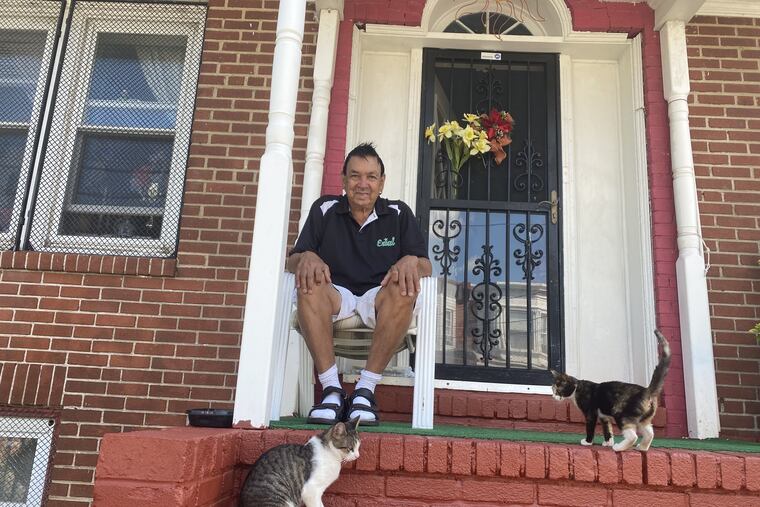COVID and other health crises continue to take years off our lives, CDC says
After decades of mostly rising life expectancy in the United States, life expectancy declined in 2021 for a second consecutive year, according to the U.S. Centers for Disease Control and Prevention.

The pandemic’s continuing toll, along with other health crises, shortened the typical American’s life by nearly a full year in 2021.
After decades of mostly rising in the United States, life expectancy declined in 2021 for a second consecutive year, according to the Centers for Disease Control and Prevention. A child born in 2021 is now projected to live on average just over 76 years, down from nearly 79 just two years earlier.
Half of the decline is due to COVID-19, according to the CDC. Drug overdoses, heart disease, suicide, and chronic liver disease all contributed as well.
The CDC report, released Wednesday, highlights how the pandemic’s grim and ongoing effects continue more than two years since the defining images of its early days showed morgues overflowing with COVID-19 deaths, such as New Jersey using a refrigerated Wawa truck to store bodies and a Philadelphia hospital hauling corpses in the back of a pick up truck.
In Camden, 78-year-old retiree Jose A. Ortiz has noticed more people dying — and at younger ages.
“Maybe it’s stress,” said Ortiz, who came to the area from Puerto Rico in 1962 to pick fruit on South Jersey’s farms. He hopes to live five or eight more years. Ten, if he’s lucky.
“You never know,” he said.
While the crisis is now less visible, here’s what the federal report reveals about the striking and still deadly consequences of the years defined by COVID-19:
Declining life expectancy
Between 2020 and 2021, men experienced a greater decline in life expectancy than women, who are projected to live about six years longer.
Life expectancy also varies by race. For Indigenous people, life expectancy declined by more than 6½ years between 2019 and 2021, to just over 65 years. And the life expectancy of Asian Americans dropped by about two years, to 83½.
White Americans had the second-largest one-year decline in 2021, a full year — though the life expectancy for white people in 2021 was still nearly 5½ years higher than for Black Americans. In particular, Black and Hispanic men saw significant life-expectancy decreases over the two-year period, losing more than 4½ years.
The 2021 numbers are preliminary and may change as researchers complete the data after accounting for all death certificates.
» READ MORE: Do I need the new COVID booster? And other questions you may have.
Local challenges in Pa. and N.J.
State-level life-expectancy data are not yet available for 2021.
But based on the figures for 2020, which the CDC released earlier this month, New Jersey saw the second-largest decline — with 2.6 years lost compared with 2019. This was comparable to Louisiana and better only than New York. Life expectancy declined by 1.5 years in Pennsylvania in 2020, slightly better than the national average.
The CDC did not report local data, but the Philadelphia region’s health challenges are well-documented. Laura A. Siminoff, a professor of social and behavioral sciences at the Temple University College of Public Health, said Philadelphia most likely experienced a downward trend similar to the nation’s.
“With poverty comes excess mortality,” she said, noting high rates of gun violence and poverty.
The city continues to struggle with a drug-overdose crisis, a leading factor cited by the CDC in declining life expectancy nationally. Philadelphia health leaders expect 2021 to be a record-setting year for overdose deaths. Philadelphia today is opening a memorial garden to honor those who died of overdoses — a staggering rate of losing about three people per day since 2017.
Living in times of crisis
Marisol Torres, a 49-year-old Camden resident who works as a medical assistant, sees people working longer hours to cover the rising costs of everything from groceries to gas. This means less time to see a doctor for routine checkups and blood work, she said.
Torres works in the obstetrics and gynecology department at CAMcare Health Corporation, which serves low-income residents, many without health insurance.
At the height of the pandemic and still today, Torres has noticed that some people avoid seeing a doctor for fear of catching the virus.
“They don’t want to come to the office, because they’re scared to get COVID,” said Torres, on her way to a post office in Camden during her lunch break. “Then they delay their care.”
Still, Paul Offit, director of the Vaccine Education Center at Children’s Hospital of Philadelphia, finds reason for optimism in the COVID-19 vaccines and new therapeutics.
“When you suddenly have a lot of people dying, including dying younger, then that knocks down the life expectancy,” he said. “We’ll see what happens when we get COVID under more control, whether those numbers hold up.”
And life-expectancy projections can improve, said Angus Deaton, a Nobel Prize-winning economist and professor at the Princeton School of Public and International Affairs. The calculation takes into account the risk of dying at every age in a single year. But that changes every year — for the better with progress, and for the worse with crises like a pandemic.
» READ MORE: New COVID-19 cases, deaths keep falling nearly everywhere, WHO says
Deaton and Princeton colleague Anne Case studied the drop in life expectancy in the United States in 2015 and found that it was driven by alcohol-related liver disease, suicide, and drug overdose, causes of death they called “deaths of despair.”
Along with COVID-19, these deaths continue to play a large role in life expectancy, according to the most recent CDC report.
Some other countries have bounced back from the pandemic’s dip in life expectancy, Deaton said.
“That’s not what happened in the U.S.,” he said, “so in some sense we’re doing badly compared with what we might have hoped for.”